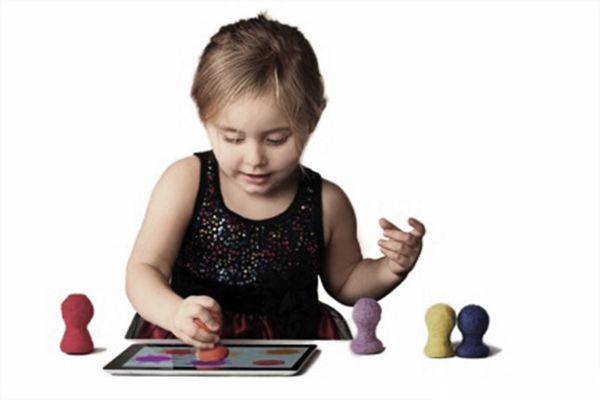iPad tablets have become increasingly popular in young children’s learning and entertainment experience, drawing the focus of researchers at Texas A&M.
Jinsil Hwaryoung Seo, assistant professor in the Department of Visualization, and visual studies senior Janelle Arita are conducting a study that focuses on children ages 4-6 and how they interact with iPads with art “stampies.”
Stampies act as the drawing tool the participants use on the tablets. Seo’s research group created the tangible interaction pieces in a previous study.
“Stampies consists of tangible objects made out of different materials — wood, felt, silicone, plastic — and an iPad drawing application,” Seo said.
The children interact with the stampies for about one hour in the study and use the tool like they would a pencil.
“We are going to study how children choose a different stampie based on artistic choices — color, brush, shape, etc. — and how the materiality of each stampie affects their digital art creation,” Seo said.
Seo said the goal of the research is to investigate whether a physical object can have an intrinsic meaning for a child and whether this association can help the child better interact with a digital application.
One finding so far is the association of wood with musical instruments and felt with clothing, Seo said.
“From the study we learned that there is great potential to enhance the transparency of interfaces and to guide user actions by tapping into the power of materiality in systems for young adults,” Seo said.
Seo said household ownership of tablet computers has increased from 20 percent in 2012 to 51 percent in 2014, and 7 percent of children have their own tablets. Seo said she does not want tablets to be a part of children’s daily life, but in large academic communities like College Station the new technology is unavoidable.
“I believe that we need to find a healthy way to use it every day, introducing physical activities that might go with it,” Seo said. “Through this study, we ran a couple of workshops to create the tangible objects with children and parents.”
The studies with parents were especially successful. Seo said the children felt parents were supportive of their interests. Seo hopes to expand the study to a child-parent interaction study in the future.
Seo said one challenge of the study is the age of the participants.
“The age group of 4 to 6 is not an easy group to study with because many of them are still not very clear on expressing their opinions,” Seo said. “However, we find this is critical, so we do extensively observe and analyze a child’s activity in each session and collect background information of the child from the parent to triangulate all data.”
Arita is using the study for her thesis research. She said the data collected will contribute more information to the Human Computer Interaction Community.
“I’m aiming to submit my work to Interaction Design and Children, which is an international conference about technology for children,” Arita said. “Hopefully, the results of my work will help to further knowledge on how to benefit tangible interaction design for children.”
The study will continue through Thursday. The research will be presented at the International Conference on Tangible Embodied and Embedded Interaction in January 2015.
Study evaluates child creativity with technology
December 14, 2014

PROVIDED
0
Donate to The Battalion
$1765
$5000
Contributed
Our Goal
Your donation will support the student journalists of Texas A&M University - College Station. Your contribution will allow us to purchase equipment and cover our annual website hosting costs, in addition to paying freelance staffers for their work, travel costs for coverage and more!
More to Discover









